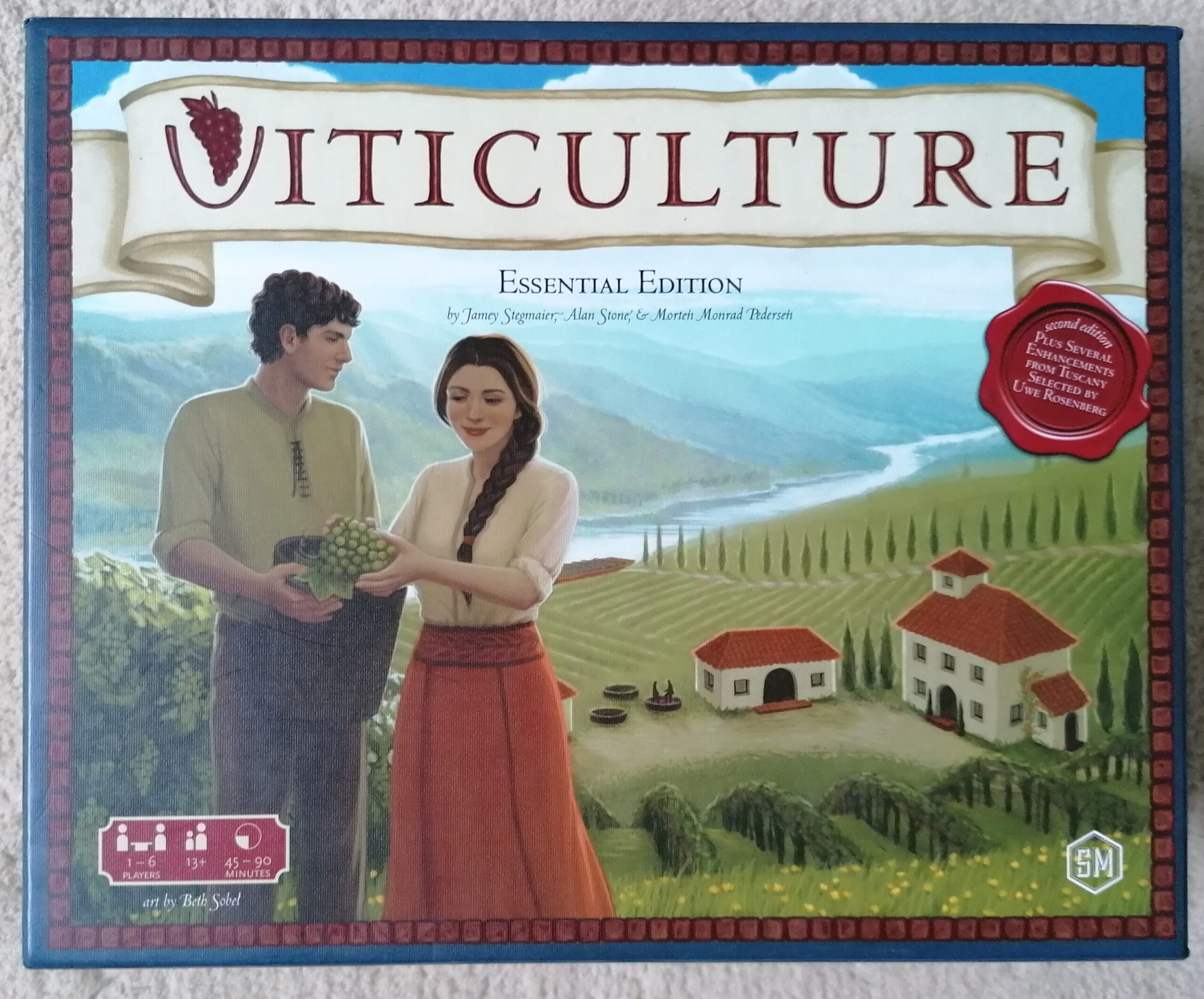Favourites from my collection
#2 Viticulture
Viticulture makes it a Stonemaier Games hattrick and is my favourite of theirs. The game that started the company, the game that started designer Jamey Stegmaier’s career in game design, and one of the games that started my collection in this hobby. Two things attracted me about it: the theme, and that it was a worker placement game. Though I don’t drink wine and am not hugely interested in vineyards, it was a different theme from one I’d seen before in a game. Having owned and played it for years now, I think it does come across well. The most intriguing thing to me was that the worker placement aspect was broken up into seasons, where you have only one set of actions available to you (the ‘summer’ actions), and if you want you could use all your available workers there, or you could save some for the next part of the round, where the ‘winter’ actions become available.
Spring and autumn also do feature in the game, though, in the base game, they are smaller. In spring, you choose your position on the ‘wake-up chart’, placing a piece (a lovely wooden rooster) on a number between 1 and 7. This will determine the turn order for the rest of the round, and the lower down in turn order, the better bonus you will get. This is a game for 1-6 players, but all numbers are always available to choose from, so in a lower player count game you could pick a higher number and still end up being the first player. This part adds a nice bit of push your luck to the game. You may want a specific bonus, but you really want to go first this round, so when it comes to you, do you risk it?
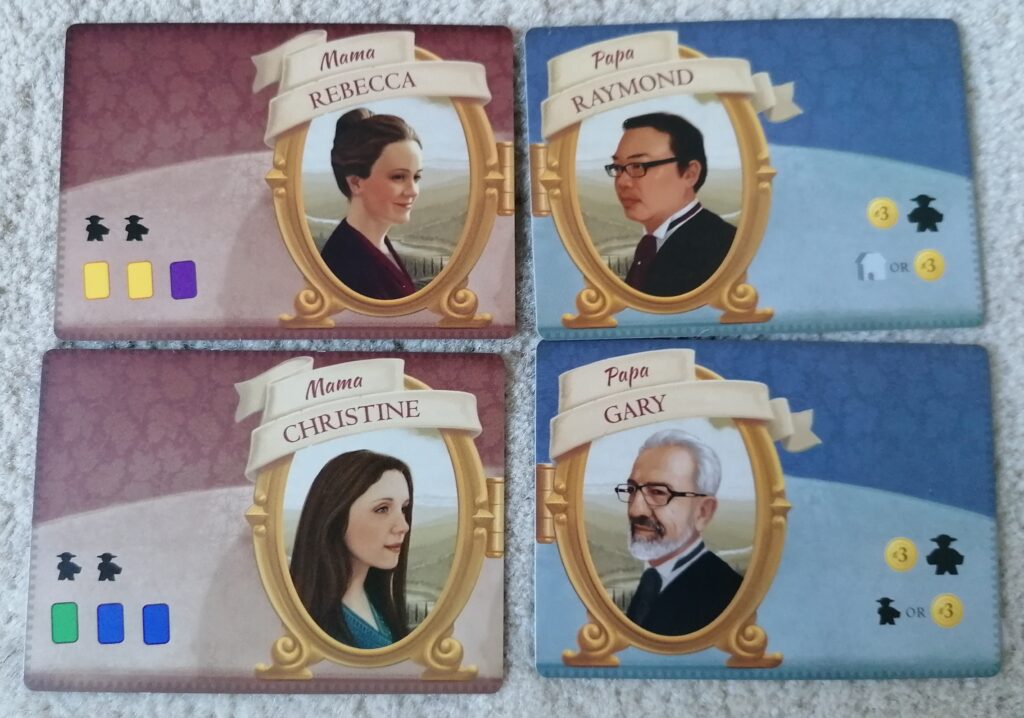
Now, I am talking here about Viticulture: Essential Edition, which is the only version of the game available. This edition takes the original design and adds a couple of things that came with the original expansion, which the designer, along with another board game designer Uwe Rosenberg, decided should be in the base game. I haven’t ever played one of the previous versions of the game, but I can’t imagine the game without these editions, one of which is the ‘Mama’ and ‘Papa’ cards. Each player receives one each of these cards at the beginning of the game, and they give each player some asymmetry, and therefore allow them to focus on what they will be doing going forward, at least for the first few rounds. The Mama cards will give you a number of cards to begin the game, and the Papa cards will give you a set amount of Lira to start off with, plus a choice. In the ones pictured above, Papa Raymond gives you the choice between starting with a building or with extra Lira, and Papa Gary will either give you an extra worker or some extra Lira. Though they all follow the same basic format, I enjoy the choice it gives you right from the get-go.
Another addition to this version of Viticulture is the ‘Grande’ workers. In some worker placement games, when a spot is taken by another player, then it is completely unavailable to you. In others, they find a way around this, usually by making you pay an extra worker, or ‘bumping’ the originally placed worker back to its owner, allowing them to use it again. The Grande workers, however, are a precious resource. Though you can hire more workers in Viticulture, you will only ever have one Grande worker. Its ability is that it can use a space even when someone else has gone there. The trick is knowing when to use it. Do you really need to go to that space so desperately that you will use your one available resource to go there, or should you save it just in case someone else takes a space you really want in a future season? It’s a tense decision that could just make or break your round.
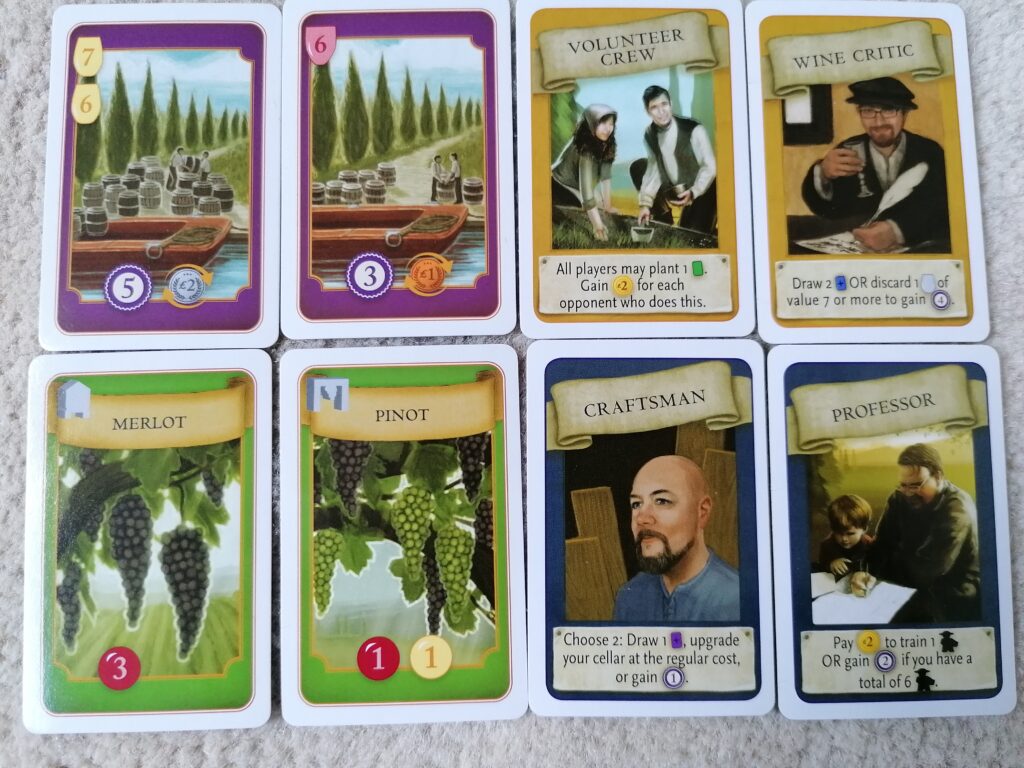
There are four main card types in Viticulture. Vine cards, which will allow you to plant grapes in your fields, to be harvested, crushed and turned into wine, wine order cards, which will give you points and ongoing payments based on which wines you sell, and summer and winter visitors, which can be used depending on which season you are in to benefit you in numerous different ways. Some will allow you to gain points and/or other resources, whereas others will allow you to perform actions. These cards can be incredibly useful, especially in times when an action space has been taken, and either you’ve used, or want to save, your Grande worker. All of these cards really pull the game together, and the way they interact with the main mechanic of the game is incredibly intuitive.

As I have discussed in previous reviews of games from Stonemaier Games, the production, for me, is once again excellent. Rather than choosing cardboard tokens as player pieces or to represent different buildings, they chose to give you beautifully cut wooden pieces, from a windmill to a trellis, and you even get a little wine bottle. The art is lovely, and brilliantly evokes the theme and setting of this game. But by far my favourite component, not just in this game, but maybe in any game I have played, is the small glass beads that you place on your board to represent the grapes you have in your crush pad and wine you have in your cellar. They may not seem like much, but the tactility of them, mixed with the fact that they magnify the colour and number (which represents the quality) of grape/wine on your board, make them highly functional and brilliant things to have as part of the game.
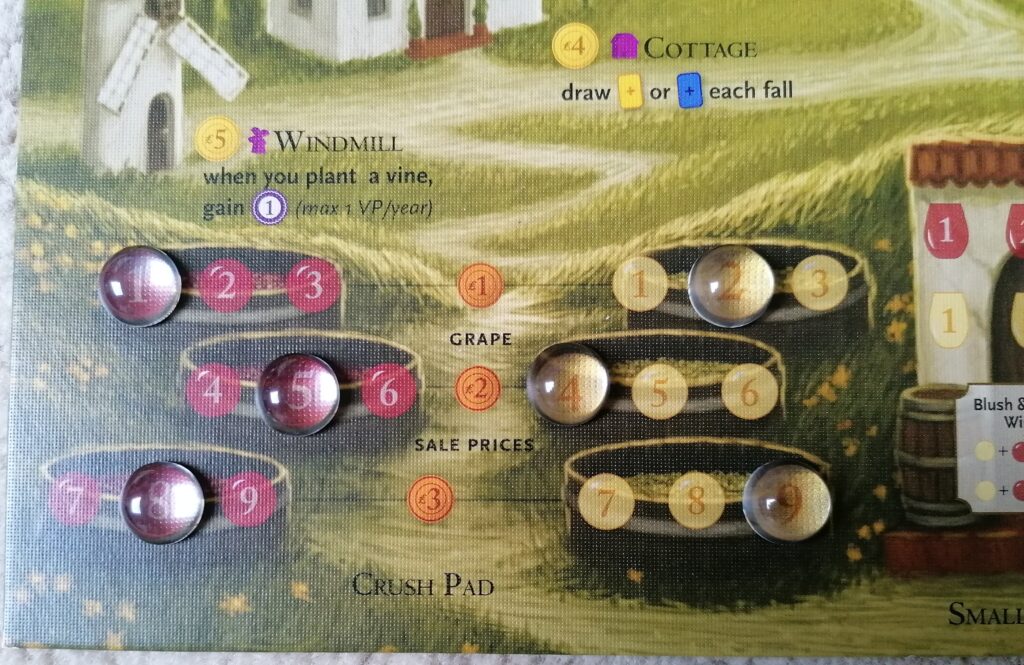
Luck of the draw is something that’s often discussed in games with lots of cards present, and Viticulture is no different. Some people do not like the thought that a long-term strategy could succeed or fail depending on a card draw. The wine order cards are the most used example for this argument because they can vary a lot, from requiring three lots of low-quality red or white wine, all the way up to the highest quality sparkling wine. For me, this isn’t a problem, for three reasons. Firstly, and something that I always believe is a valid strategy in this game, is that you don’t have to sell wine. There are numerous other ways to gain points, predominantly through buildings and visitor cards. Secondly, I have never played a game where I, or any other player, has struggled to make wine, and/or struggled to adjust if a wine order is drawn that doesn’t necessarily play to your strategy. On top of the fact that your wine can be of a higher quality wine than required on the card, I think it’s difficult to argue that this is an issue. Finally, I feel like if you have not prepared in some way to counteract this happening, then that’s not the games fault. You know from the beginning that there are two types of grapes (white and red) four types of wine (red, white, rosé and sparkling, with each of these last two being produced by mixing the main two), so if you don’t plant one of the two types of grapes anywhere in your fields, then you’re setting yourself up for disappointment.
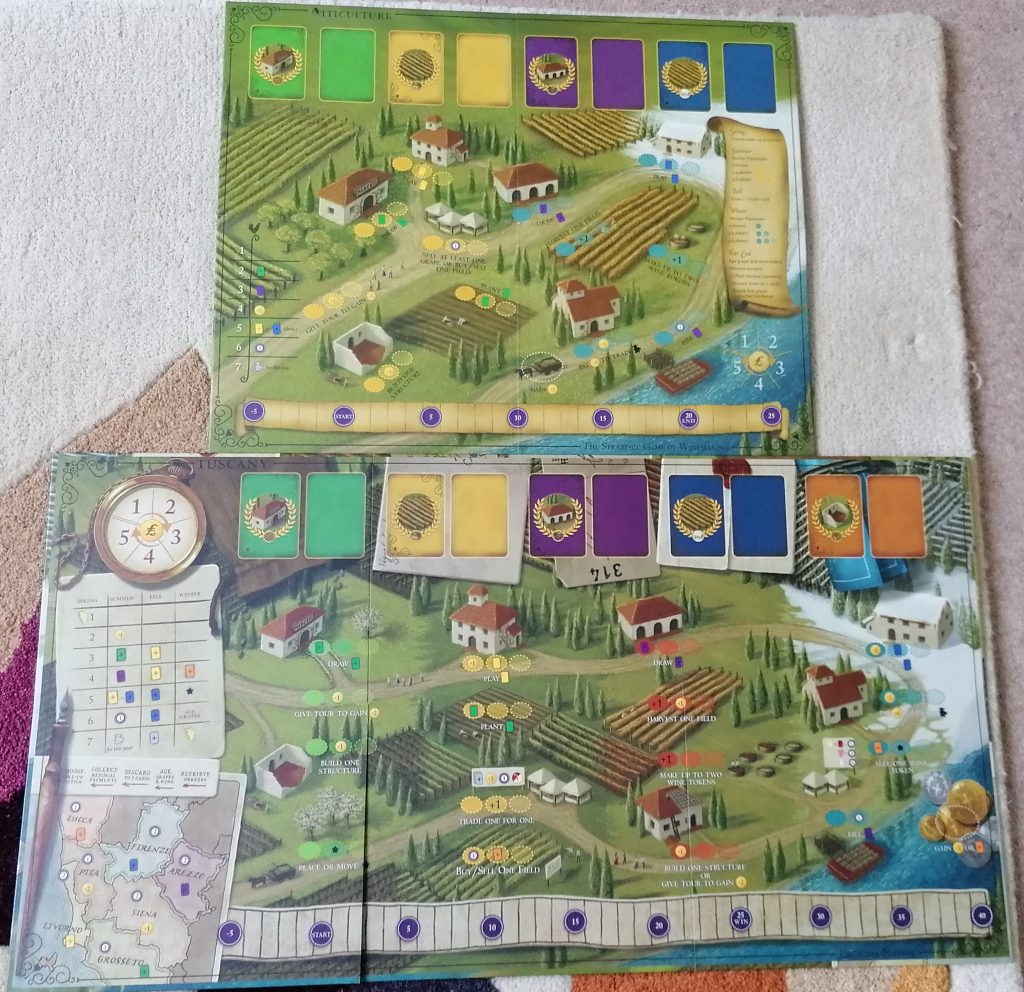
Viticulture is, for me, a great game, and standing on its own, it would probably still be high in my favourites. However, the expansion, Tuscany (again, this version is called Essential Edition), not only makes the game fantastic, for me, it is the best expansion to a game I have ever played. The main focus of this expansion is the new board. It is quite a bit larger than the original, and adds action spaces for each of the four seasons, as opposed to in the base game, where summer and winter are the main two. Though there is still the same number of spaces to go on the board, the decision about whether to use all your workers at once or save them is now made even more agonising (in a good way). Some of the actions have been improved, or completely changed, giving you even better choices. The wake-up chart has also been edited, simultaneously making it more rewarding and giving you more interesting decisions to make. Instead of gaining a bonus immediately, you will gain bonuses as you pass into new seasons. Position seven, though incredibly tempting, now means that you are guaranteed to be in position one for the next round, which is good because you’ll definitely be first in turn order, but bad because you won’t get any bonuses.
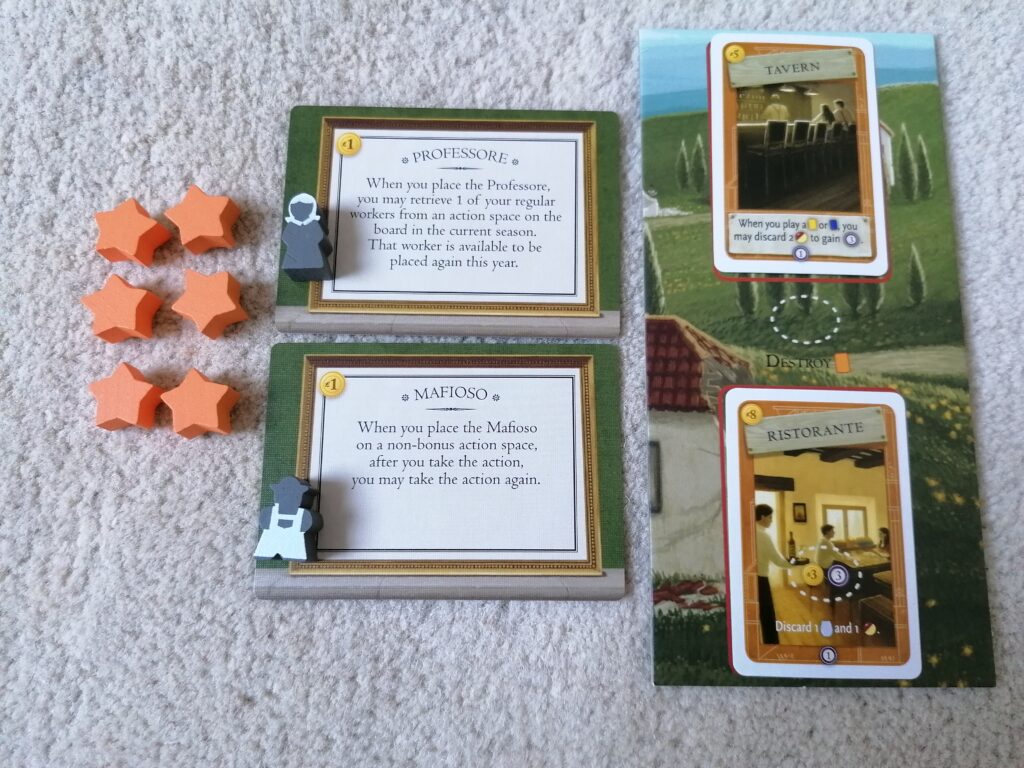
This expansion is a modular one, so you can choose to play with as few or as many of the new gameplay elements as you want. You now have the option to place stars on a mini-map in the bottom left of the mainboard, where you can gain further bonuses, as well as playing a nice little area control game. You can introduce special workers, which are more expensive to hire (and limited to one of each type per player) but will allow you to bend the rules of the game slightly. But the best module, and one which I will never play without, is the new structure cards. You each receive a new sideboard and can have a maximum of two structures, which are individual to you, built at a time. They can range from giving you a new worker placement spot, just for you to use, to giving you an ongoing ability when you perform another action. No matter what they are, they all add a wonderful element of asymmetry to the game, as well as giving you even more options to explore. As I always say, play the base game first, and if you love it like I did, or just like it but feel like it needs something more, then this is a must-have addition to the game.
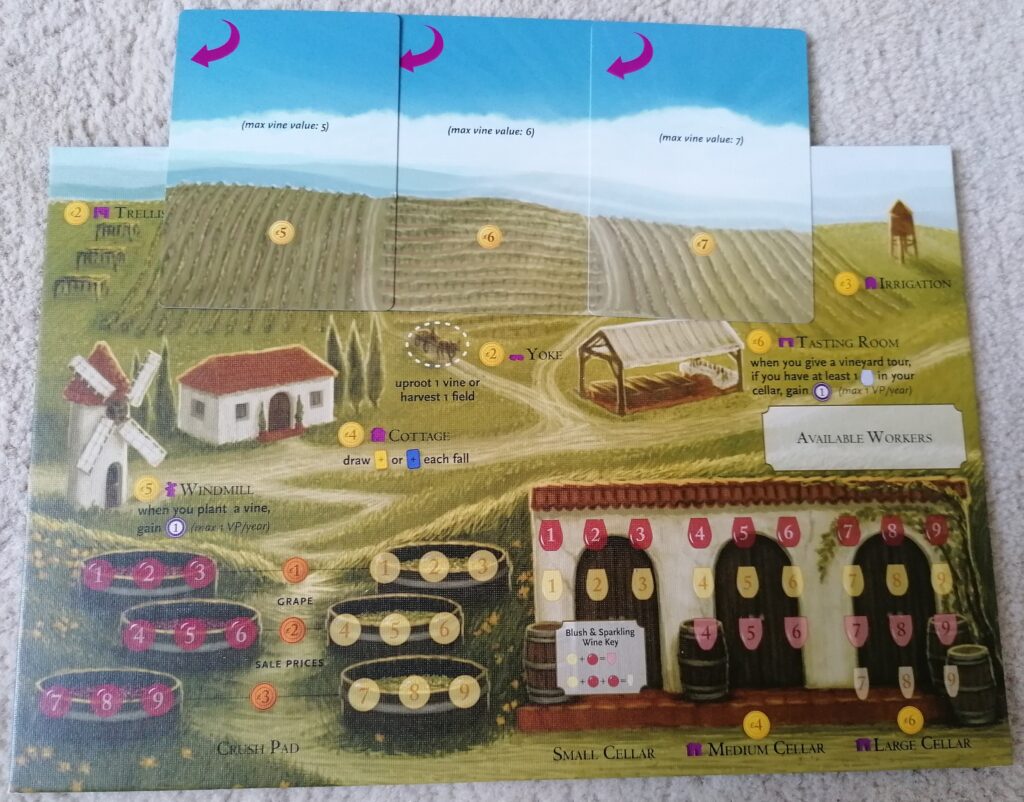
I mentioned at the start of the review that this was one of the first games I bought, and it is a game that I can never imagine getting rid of. If there is one thing that I love about Stonemaier Games’ games, it is the combination of simplicity and high depth. Viticulture is the best at this for me. Place a worker, do the action, play moves to the next player. On the surface, that is very simple, but the amount of choice you are given in this game is wonderful, and trying to figure out the optimal way to play is a puzzle I adore. It is a game that I will always promote, and I highly recommend that if any of it sounds appealing, you look into it further.
| Prices delivered by BoardGamePrices | |
|---|---|
 | Viticulture £41.63 with shipping, in stock! Buy now See all 4 offers! |

